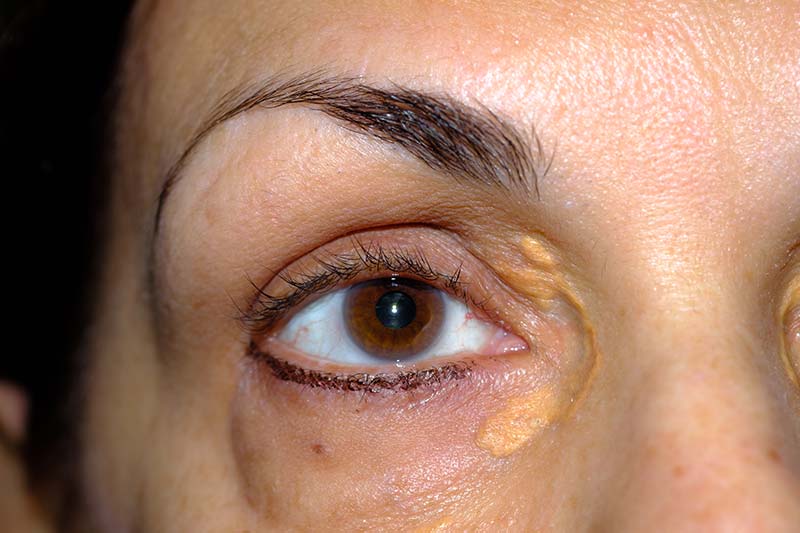Satellite Office
4660 Kenmore Avenue, Suite 416Alexandria, VA 22304
703-620-4300

No one wants puffy eyes, let alone discoloration. But due to cholesterol deposits building up under the skin, xanthelasma can cause yellow skin plaques around your eyelids, making sufferers feel self-conscious and concerned for their health. Worse yet, the lesions tend to grow and become more prominent with time.
The good news is that xanthelasma is benign. Removal is not necessarily medically required, but many find it unsightly and choose a corrective procedure. Xanthelasma tends to grow, and the larger it gets, the harder it is to treat. So, scheduling a visit when you first start noticing yellow patches will make your treatment and recovery easier.
There are many ways to remove xanthelasma, but Dr. Scott’s preferred method is to directly excise the lesions in a staged fashion. After any removal, the skin tends to heal with a slightly lighter color than of the surrounding eyelid skin. As such, Dr. Scott likes to remove a small portion and wait for it to fully heal before deciding on further treatment. If the patient is happy with the results, he will continue removing small sections until the xanthelasma is completely removed. While multiple treatments may be inconvenient, they are necessary to ensure proper healing with minimal scarring.
Xanthelasma rarely recurs in the same spot, though it may develop in other locations around the eye. But having the yellow areas removed should not be the end of a xanthelasma patient’s journey. Contrary to what you might expect, high cholesterol doesn’t necessarily cause xanthelasma. Though about half of xanthelasma patients have elevated levels, that’s roughly the same rate of adult individuals having elevated cholesterol (38%).
However, researchers have linked xanthelasma to heart disease. It’s 1 of 4 risk markers, alongside receding hairline at the temples, baldness on the crown of the head, or an earlobe crease. Having three of these four symptoms makes a person 57% more likely to have a heart attack, and the fatty deposits around the eyes (xanthelasma) are the most powerful individual predictor of subsequent cardiac disease.
|
So, your treatment should not end in Dr. Scott’s office. If you’ve developed xanthelasma, schedule an appointment with your internist/cardiologist. They can determine your risk factors and decide if you need additional tests or medication(s). It’s normal to care about what you look like on the outside, but your internal health should be your top priority. |
  |